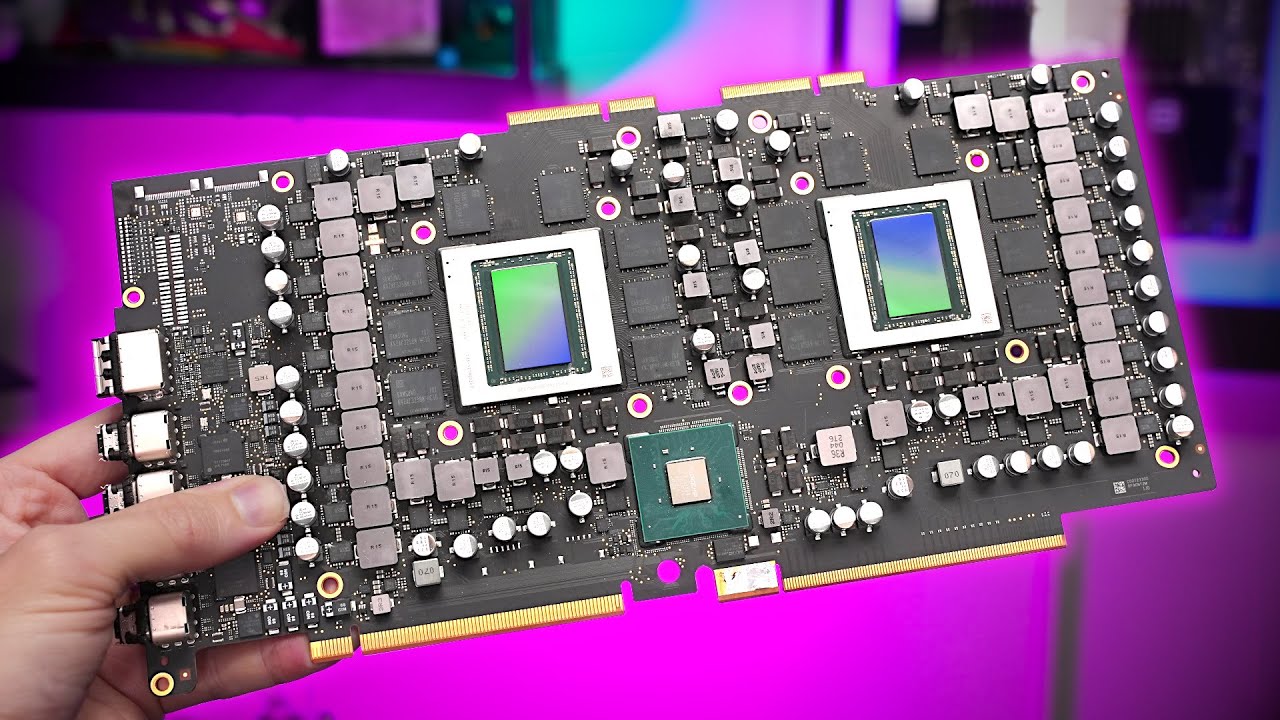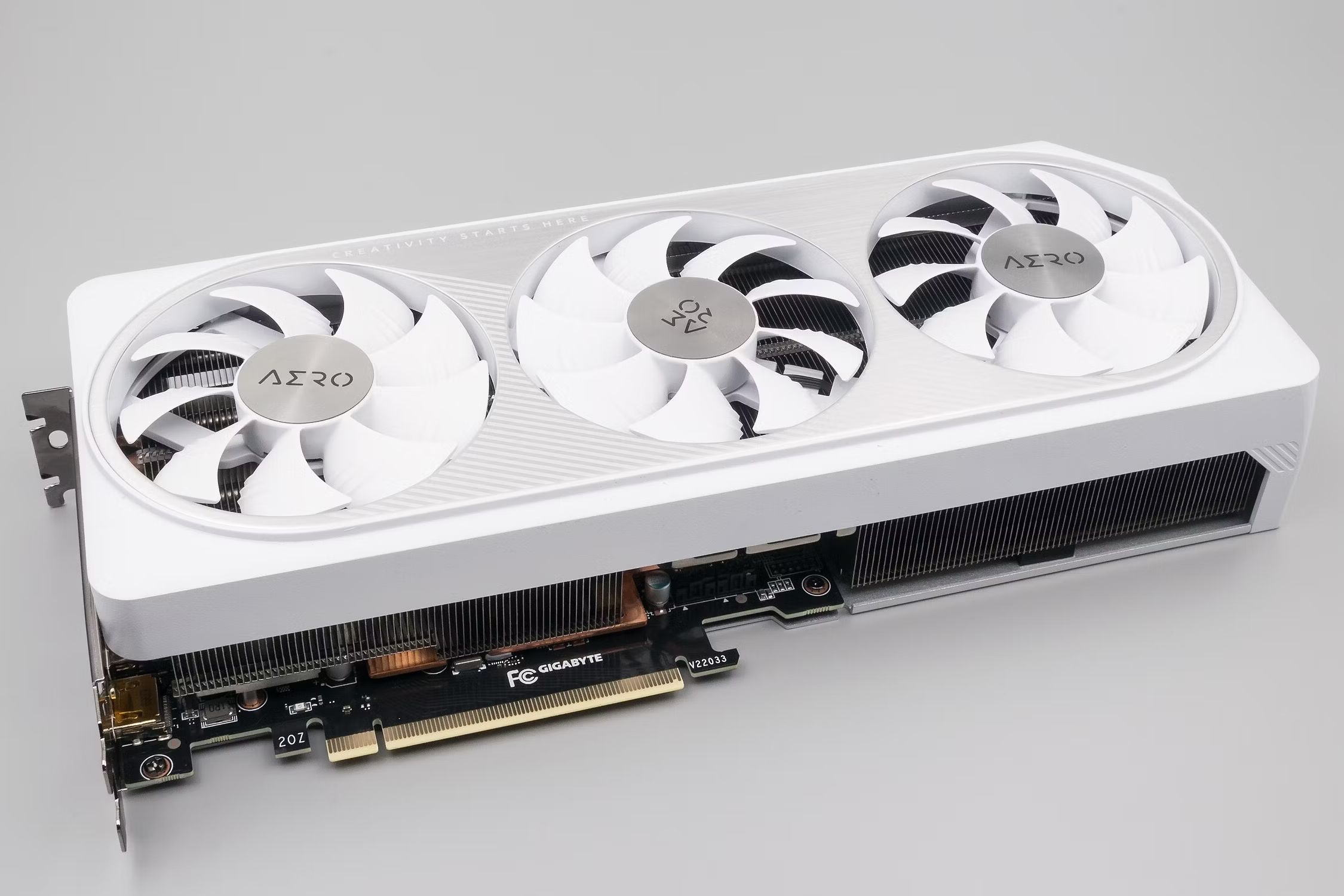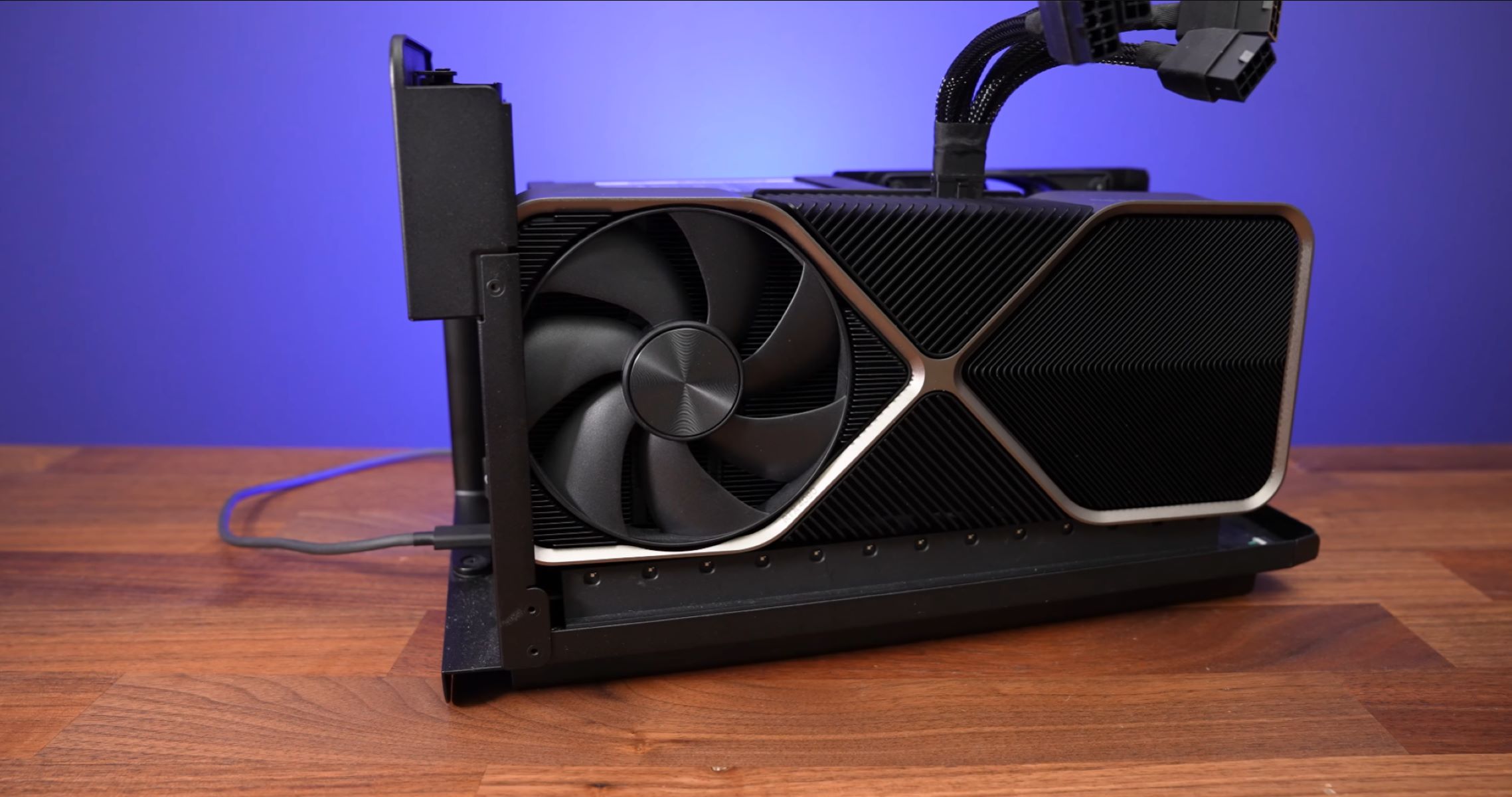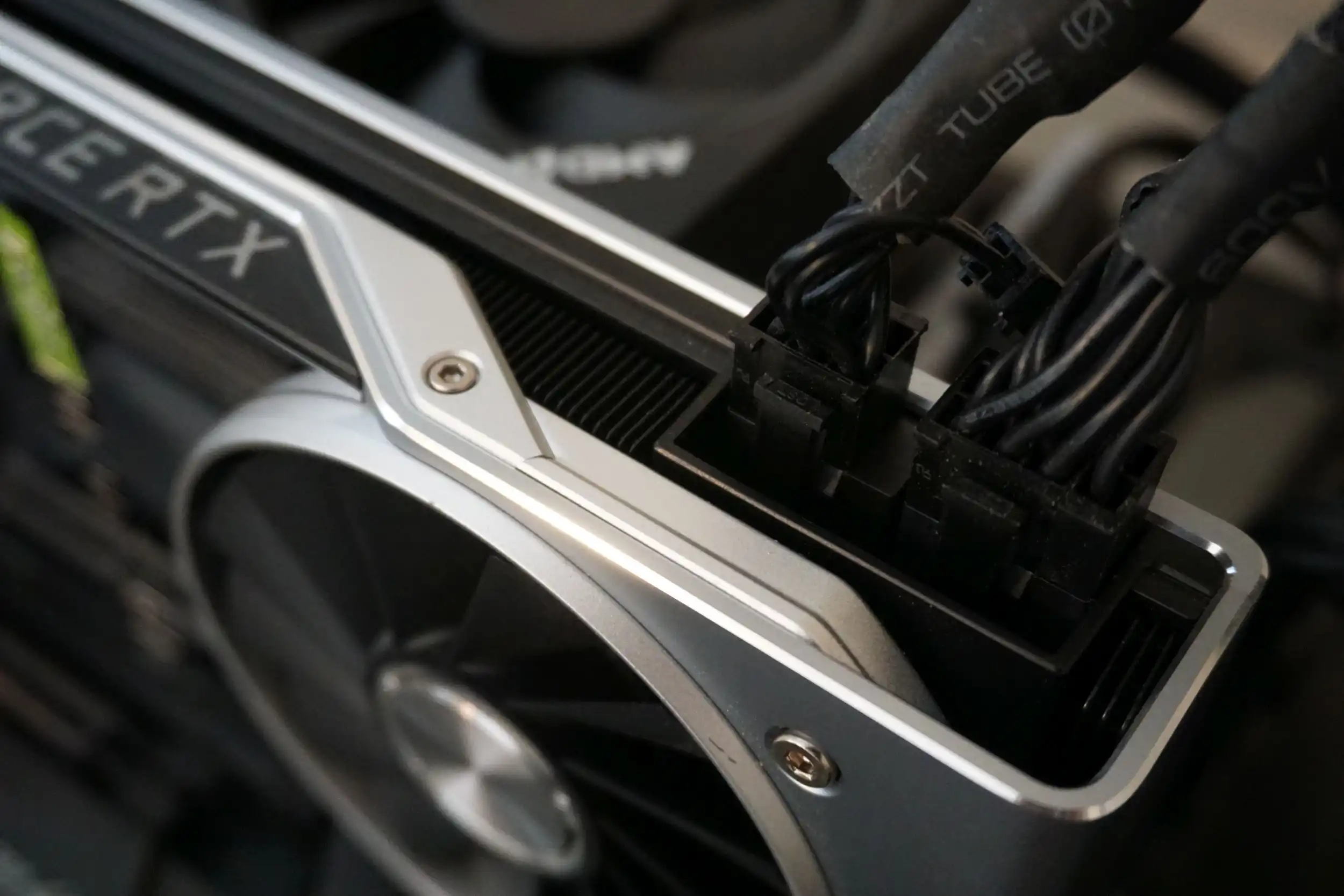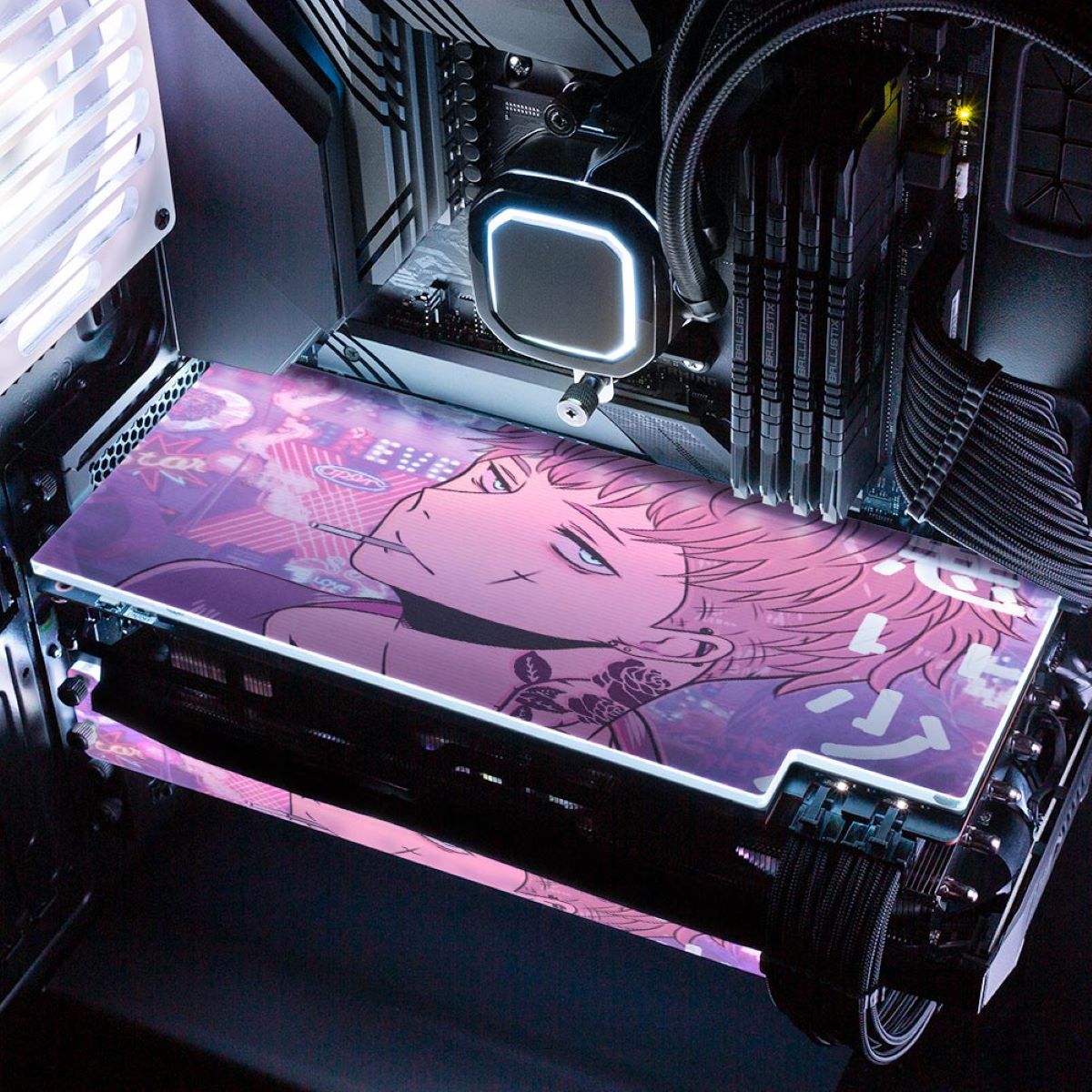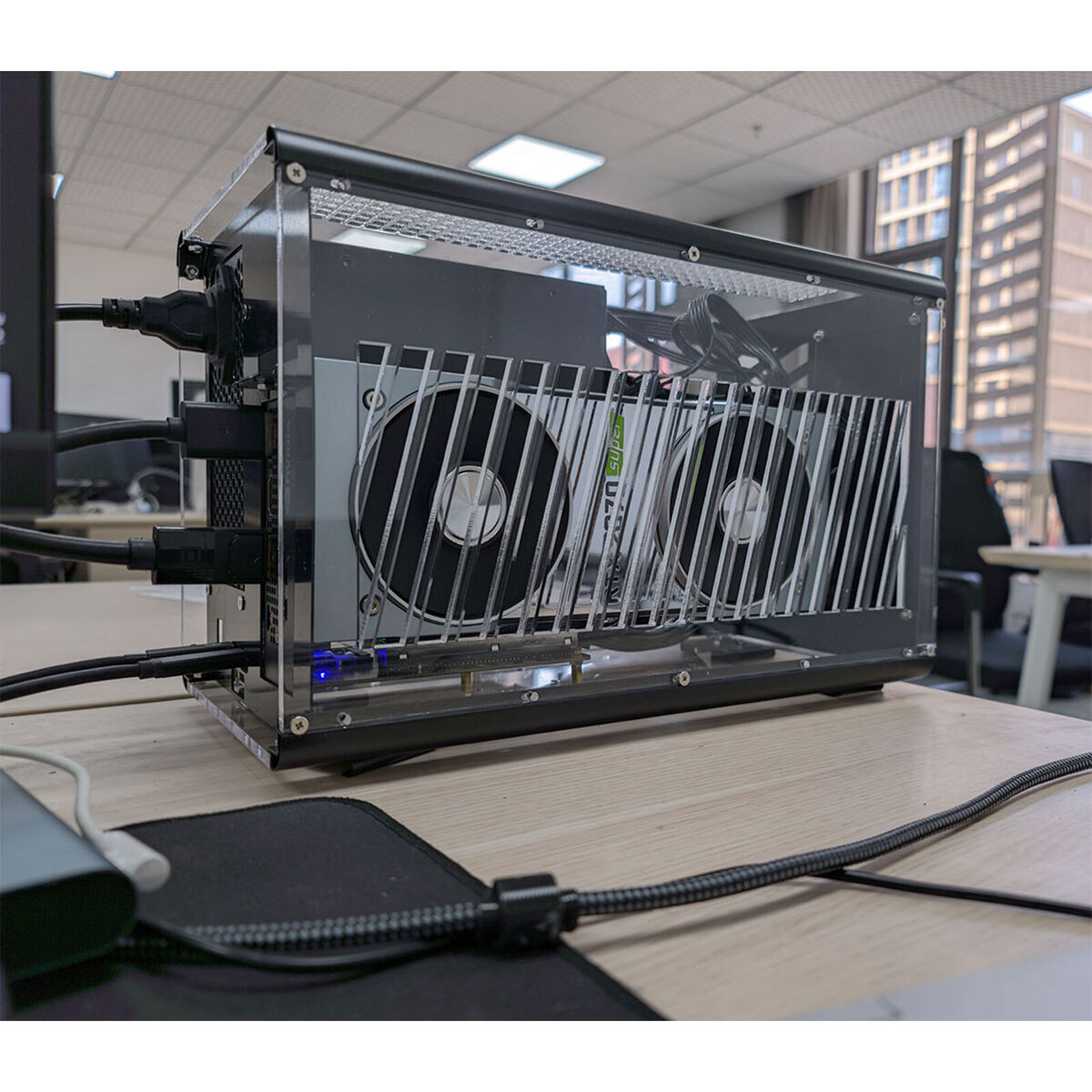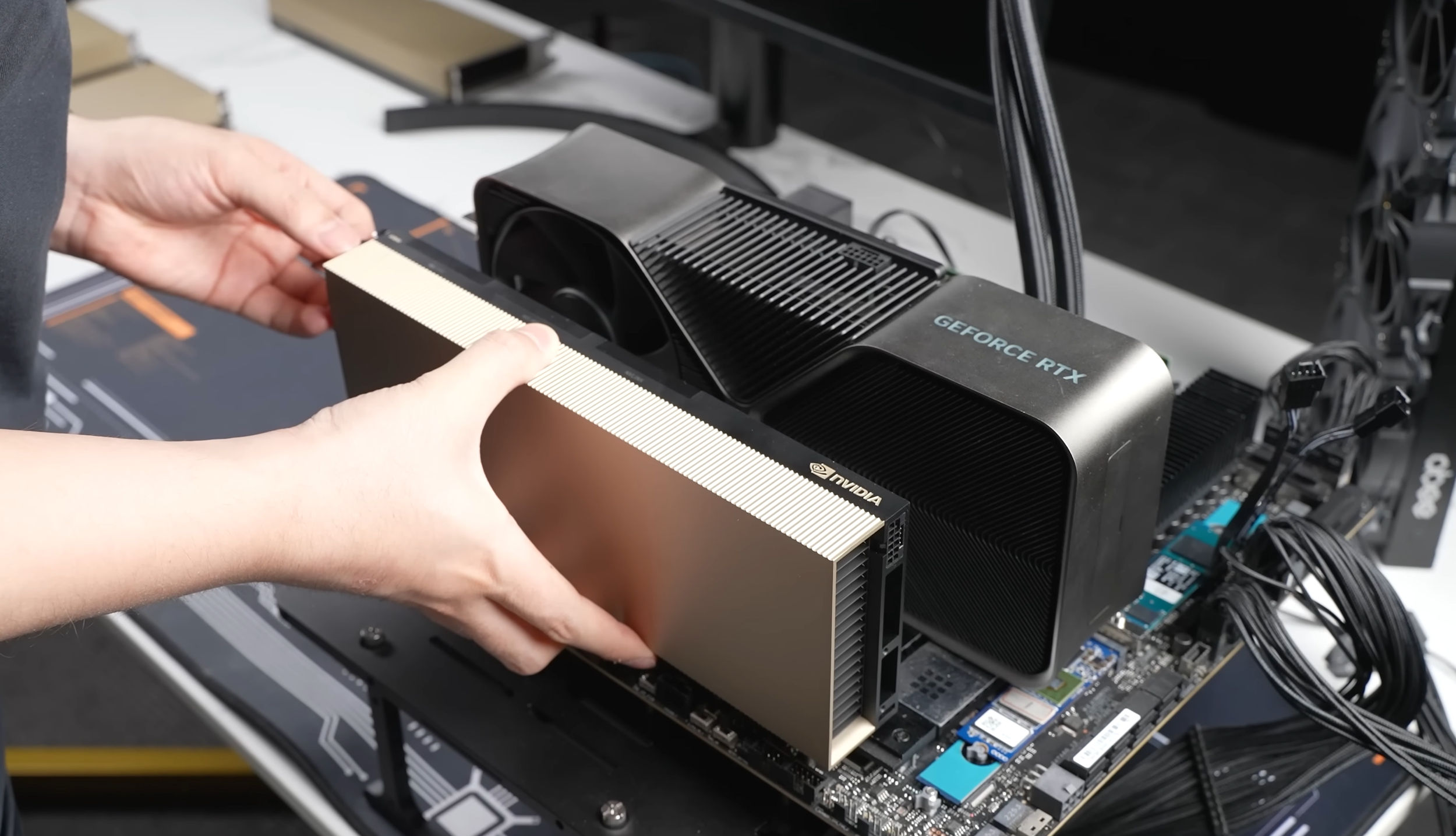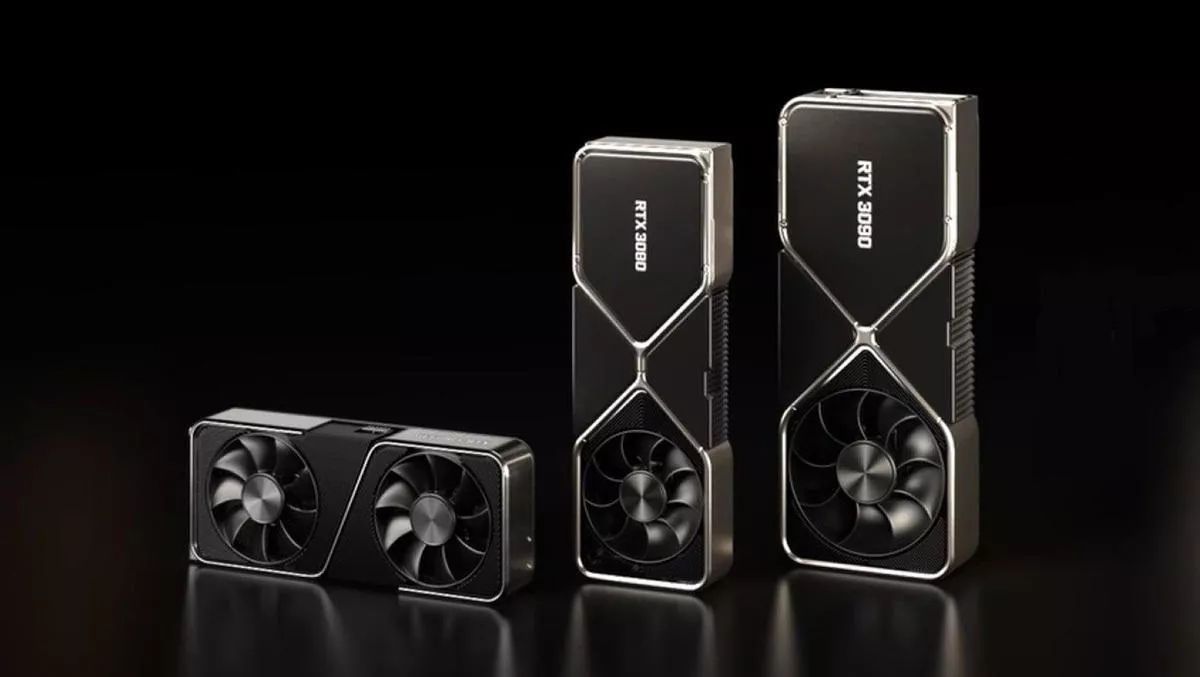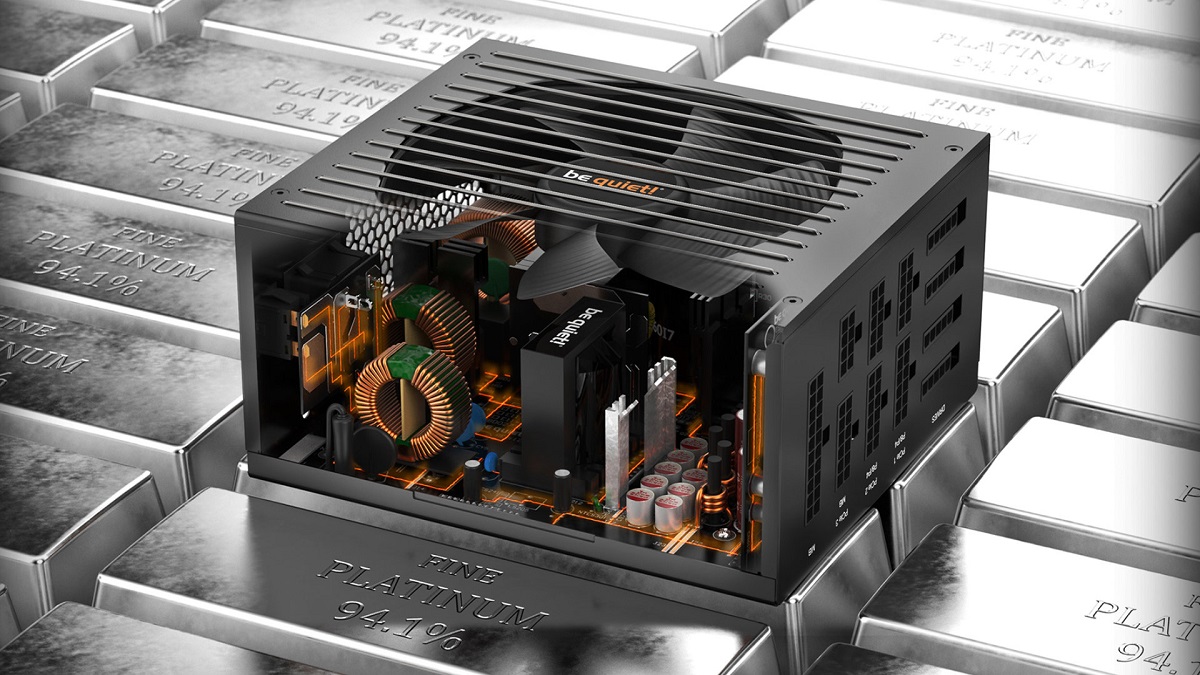What Is a Dual GPU?
A dual GPU, also known as a dual graphics card, refers to a setup in which a computer system utilizes two separate graphics processing units (GPUs) simultaneously. Unlike a single GPU configuration, a dual GPU setup harnesses the power of two dedicated graphics cards to enhance overall graphics performance. Essentially, it doubles the graphical processing capability of the system, enabling it to handle more demanding tasks such as gaming, video editing, and 3D rendering with greater ease and efficiency.
In a dual GPU configuration, each graphics card works in parallel to tackle the workload, dividing the graphics rendering tasks between them. This collaborative effort results in improved frame rates, smoother gameplay, and higher graphical fidelity. It allows for more complex and realistic visuals, making the gaming experience more immersive and enjoyable.
The concept of dual GPUs is not limited to desktop computers; it can also be found in high-performance laptops and workstations. These systems often feature custom cooling solutions and high wattage power supplies to ensure optimal performance and stability during intense graphics-intensive tasks.
It is essential to note that a dual GPU setup requires a compatible motherboard and sufficient space in the computer case to accommodate both graphics cards. Additionally, the operating system and graphics drivers must support multi-GPU configurations to fully utilize the potential of the dual GPUs.
In summary, a dual GPU configuration is a powerful graphics solution that offers significant performance advantages over a single GPU setup. It unleashes the full potential of a computer system, allowing for smoother gameplay, enhanced graphics quality, and improved productivity when handling graphically demanding tasks. Furthermore, the availability of dual GPU setups in both desktops and high-end laptops provides users with options to choose the best system that suits their needs.
Definition
A dual GPU, short for dual graphics processing unit, is a configuration in which a computer system utilizes two separate graphics cards simultaneously to enhance its graphical processing power. This setup allows for improved performance in graphic-intensive tasks such as gaming, video editing, and 3D rendering.
Each graphics card in a dual GPU setup works in parallel, sharing the workload to ensure smoother frame rates, increased graphical fidelity, and overall better gaming experience. The two graphics cards combine their processing power to handle more demanding graphical tasks that a single GPU might struggle with.
Dual GPU configurations can be found in both desktop computers and high-performance laptops. In desktop setups, the two graphics cards are physically connected to the motherboard using various interfaces like SLI (Scalable Link Interface) for NVIDIA GPUs or Crossfire for AMD GPUs. In laptops, the dual GPU setup is typically achieved through a combination of an integrated graphics chip and a dedicated GPU.
To fully utilize the benefits of a dual GPU setup, the computer’s operating system and graphics drivers must support multi-GPU configurations. This allows for efficient distribution of graphical processing tasks between the two GPUs, optimizing performance and delivering seamless visuals.
Overall, a dual GPU configuration can significantly enhance a computer’s graphical capabilities, providing smoother gameplay, improved graphics quality, and better performance in demanding applications. It is an option to consider for those seeking top-notch graphics performance and a more immersive computing experience.
Features
A dual GPU setup offers various features that contribute to its enhanced graphics processing capabilities. Here are some notable features:
1. Increased Graphics Performance: The primary feature of a dual GPU configuration is the significant boost in graphics performance. By pooling the computational power of two graphics cards, this setup allows for smoother gameplay, faster frame rates, and improved graphical fidelity. It enables users to run graphically demanding games and applications at higher settings without sacrificing performance.
2. Parallel Processing: Dual GPUs work in parallel, with each graphics card handling a portion of the graphical processing workload. This parallel processing allows for faster rendering of graphics, reducing bottlenecks and ensuring a seamless and responsive user experience.
3. Enhanced Multi-Monitor Support: Dual GPUs often provide excellent support for multi-monitor setups. With two graphics cards, users can connect multiple displays and enjoy an expanded desktop space for increased productivity or an immersive gaming experience. This feature is particularly useful for professionals working with graphic design, video editing, or stock trading, where multiple screens can enhance workflow efficiency.
4. VR-Ready Performance: Virtual Reality (VR) gaming and content creation require substantial graphics processing power. Dual GPU setups are well-equipped to handle the demands of VR applications, ensuring a smooth and immersive experience. The combined power of two graphics cards allows for more realistic and detailed VR environments with reduced latency.
5. Flexibility and Scalability: Dual GPUs offer flexibility and scalability to users. It allows them to upgrade their system by adding a second graphics card instead of replacing the existing one. This upgrade path can be cost-effective and beneficial for users who want to keep up with the latest graphics technologies without investing in an entirely new graphics card.
6. Customizable Lighting and Aesthetics: Many dual GPU setups come with customizable LED lighting and aesthetics. These features allow users to personalize and customize the appearance of their graphics cards, adding a touch of personal style to their systems. This can be particularly appealing to PC enthusiasts and gamers looking to create visually stunning systems.
Overall, the features offered by a dual GPU configuration enhance the graphical performance, flexibility, and customization options of a computer system. It delivers a superior gaming experience, smoother video playback, and the ability to handle demanding graphics tasks efficiently.
Benefits
A dual GPU configuration provides several benefits that enhance the overall computing experience, particularly in graphics-intensive tasks. Here are some notable advantages:
1. Improved Graphics Performance: The primary benefit of a dual GPU setup is the significant improvement in graphics performance. By harnessing the power of two graphics cards, users can achieve higher frame rates, smoother gameplay, and enhanced graphical fidelity. This is especially beneficial for gamers and professionals working with graphics-intensive applications such as 3D modeling, CAD, and video editing.
2. Enhanced Multi-Display Support: Dual GPUs excel in supporting multiple monitors, allowing users to create expansive desktop setups. With dual graphics cards, users can connect multiple displays and enjoy a panoramic view, increasing productivity and immersion. This is especially advantageous for content creators, traders, and professionals who require an extended workspace.
3. Future-proofing and Upgradability: Investing in a dual GPU setup provides users with a level of future-proofing and upgradability. Instead of replacing the entire graphics card, users can add a second GPU to their system, thereby increasing the performance without significant investment. This allows users to keep up with evolving graphics technologies and prolongs the lifespan of their system.
4. Virtual Reality (VR) Performance: Dual GPU configurations are well-suited for handling the demanding requirements of virtual reality. VR applications rely heavily on graphics processing power, and the parallel processing capabilities of dual GPUs ensure a smooth and immersive VR experience. With a dual GPU setup, users can enjoy realistic and detailed virtual environments with reduced latency.
5. Professional Applications: Dual GPU setups are highly beneficial for professionals working in fields such as graphic design, video editing, and 3D rendering. These applications can be resource-intensive, requiring substantial graphics processing power. With dual GPUs, professionals can handle complex tasks more smoothly and efficiently, improving productivity and reducing rendering times.
6. Customization and Aesthetics: Many dual GPU setups come with customizable lighting and aesthetics. This feature allows users to personalize their system’s appearance and create visually stunning builds. PC enthusiasts and gamers can add their touch of style and uniqueness with different lighting effects, making their system stand out.
In summary, a dual GPU configuration offers improved graphics performance, enhanced multi-display support, future-proofing, VR capabilities, suitability for professional applications, and customization options. Whether for gaming or professional use, the benefits of a dual GPU setup contribute to a more immersive and efficient computing experience.
Performance
A dual GPU setup significantly enhances the performance of a computer system, particularly in graphics-intensive applications and gaming. Here are some key points about the performance benefits of a dual GPU configuration:
1. Increased Frame Rates: One of the most noticeable performance improvements with a dual GPU setup is the increase in frame rates. By dividing the workload between two graphics cards, dual GPUs can deliver higher FPS (frames per second) in games, resulting in smoother gameplay and a more immersive gaming experience. This is especially beneficial for gamers who want to enjoy their games at higher resolutions and maximum visual settings.
2. Improved Graphics Quality: Dual GPUs allow for greater graphical fidelity in games and applications. With the computational power of two graphics cards, the system can render more complex and realistic graphics, including higher-resolution textures, improved lighting effects, and advanced visual effects. This means sharper details, more vibrant colors, and enhanced overall visual quality.
3. Smooth Multi-tasking: The parallel processing capability of dual GPUs also enhances multitasking performance. With two graphics cards, the system can handle multiple graphics-intensive tasks simultaneously. This is particularly valuable for content creators and professionals who often have multiple applications running simultaneously, such as video editing software, 3D rendering programs, and graphic design tools.
4. VR and 3D Rendering: Dual GPU configurations are ideal for virtual reality (VR) applications and 3D rendering. VR requires substantial graphics processing power to deliver a seamless and immersive experience. Dual GPUs can handle the demanding requirements of VR, providing smooth visuals and reducing motion sickness. Additionally, in tasks like 3D rendering, dual GPUs significantly reduce rendering times, allowing professionals to work more efficiently.
5. Scalability: Dual GPU setups offer scalability by allowing users to add a second graphics card to their system. This means that users can start with a single GPU and upgrade to a dual GPU setup in the future without replacing the entire graphics card. This scalability ensures that the system can handle the increasing demands of graphics-intensive applications and future games.
It is important to note that while dual GPUs offer significant performance gains, the actual performance improvement can vary depending on the specific tasks, applications, and games being used. Some games and applications are optimized for multi-GPU setups and can fully utilize the additional graphics power, while others may not show a significant improvement.
In summary, a dual GPU configuration provides increased frame rates, improved graphics quality, smoother multitasking, optimal performance for VR and 3D rendering, and scalability for future upgrades. These performance benefits make a dual GPU setup an excellent choice for gamers, content creators, and professionals who require top-notch graphics performance.
Types of Dual GPUs
There are two main types of dual GPU configurations: Nvidia SLI (Scalable Link Interface) and AMD Crossfire. Both configurations serve a similar purpose of combining the power of multiple graphics cards, but they differ in terms of compatibility and supported technologies. Here’s a closer look at each type:
1. Nvidia SLI: SLI is Nvidia’s technology for dual GPU setups. It enables users to combine two or more Nvidia graphics cards of the same model to work together in parallel. SLI uses an SLI bridge to establish a high-speed connection between the graphics cards, allowing for efficient communication and data sharing. Nvidia provides excellent driver support for SLI, optimizing performance for supported games and applications.
2. AMD Crossfire: Crossfire is the equivalent technology to SLI for AMD graphics cards. It allows users to combine two or more AMD GPUs to increase graphics performance. Crossfire utilizes AMD’s proprietary interconnect technology to facilitate communication between the graphics cards. While AMD’s Crossfire technology has historically had some compatibility issues and may not offer the same level of performance optimization as SLI, it is still a viable option for users with AMD GPUs who want to utilize dual GPU configurations.
It’s important to note that for a dual GPU setup to work, the graphics cards must be of the same model or within the same GPU family. Mixing different models or GPU architectures will result in compatibility issues. Additionally, the motherboard must support SLI or Crossfire technology, and the power supply unit must have sufficient wattage to provide power for both graphics cards.
Furthermore, SLI and Crossfire configurations can support more than two GPUs, allowing for even greater graphics processing power. However, it’s worth mentioning that the scaling efficiency may diminish as more GPUs are added, and the power consumption and heat generation increase significantly.
In recent years, multi-GPU setups have become less common due to advancements in single GPU performance, driver optimizations, and the increasing prevalence of gaming technologies like DirectX 12 and Vulkan, which can efficiently utilize multiple GPUs without relying on SLI or Crossfire. As a result, some newer games may not fully support or benefit from dual GPU configurations.
Overall, dual GPU configurations are available through Nvidia SLI and AMD Crossfire technologies, allowing users to combine multiple graphics cards for increased graphics performance. While these configurations can provide significant performance gains, it is essential to ensure compatibility, consider driver support, and weigh the potential benefits against the cost and potential limitations of multi-GPU setups.
SLI vs Crossfire
When it comes to dual GPU configurations, two popular technologies are Nvidia’s SLI (Scalable Link Interface) and AMD’s Crossfire. Both SLI and Crossfire serve the same purpose of combining the power of multiple graphics cards, but they differ in terms of compatibility, performance, and supported technologies. Here’s a comparison of SLI and Crossfire:
1. Compatibility: SLI is limited to Nvidia graphics cards, while Crossfire is specific to AMD graphics cards. This means that you can only use SLI with Nvidia GPUs and Crossfire with AMD GPUs. It’s important to note that not all graphics cards within the same brand and series support SLI or Crossfire, so compatibility should be considered when selecting graphics cards for a dual GPU setup.
2. Performance: Historically, SLI has been more widely supported and optimized for gaming performance. Nvidia tends to have better driver support and game compatibility, resulting in smoother gameplay and higher frame rates. However, the performance difference between SLI and Crossfire has reduced over the years, and the gap is less noticeable with newer graphics cards and game titles.
3. Technology and Features: SLI and Crossfire differ in terms of the technologies they use to facilitate communication and data sharing between the graphics cards. SLI uses an SLI bridge to connect the graphics cards directly, whereas Crossfire relies on the PCI Express bus for communication. Nvidia’s SLI also offers features like Nvidia G-Sync, which synchronizes the monitor’s refresh rate with the GPU’s rendering rate for reduced tearing and smoother gameplay.
4. Scalability: Both SLI and Crossfire support scaling up to multiple GPUs, allowing for increased graphics processing power. However, adding more GPUs does not always result in linear performance gains. Scaling efficiency can vary depending on the game or application being used. It’s important to consider the diminishing returns and increased power consumption when scaling beyond two GPUs.
5. Future Support: SLI has seen broader support and integration in gaming titles over the years, thanks to Nvidia’s dominance in the GPU market. However, both SLI and Crossfire have become less prevalent in recent years due to advancements in single GPU performance and changes in graphics technologies. Game developers are now focusing more on optimizing games for single GPUs and using technologies like DirectX 12 and Vulkan, which can efficiently utilize multiple GPUs without requiring SLI or Crossfire.
Ultimately, the choice between SLI and Crossfire depends on factors such as the specific graphics cards being used, driver support, game compatibility, and personal preferences. It’s important to research the performance and compatibility of both technologies with your specific setup and consider whether the potential benefits of a dual GPU configuration outweigh the cost and possible limitations.
Compatibility
Compatibility is a crucial consideration when setting up a dual GPU configuration. Several factors need to be taken into account to ensure that the graphics cards, motherboard, and system components are compatible. Here are some key points to consider:
1. Graphics Cards: In a dual GPU setup, it is essential to choose graphics cards that are compatible with the specific technology you plan to use, whether SLI or Crossfire. Nvidia SLI requires Nvidia graphics cards, while AMD Crossfire requires AMD graphics cards. Furthermore, the graphics cards should be from the same series or GPU family for optimal compatibility and performance.
2. Motherboard Support: The motherboard plays a significant role in determining the compatibility of a dual GPU configuration. It must have the necessary slots and connectors to accommodate multiple graphics cards. Most modern motherboards include PCI Express (PCIe) slots designed for graphics cards, and some may have specific slots labeled for SLI or Crossfire. Ensure that the motherboard supports the specific dual GPU technology you plan to use.
3. Power Supply: Dual GPU setups require a robust and sufficient power supply unit (PSU). The PSU should have enough wattage to handle the additional power demands of multiple graphics cards, along with the other components in the system. It’s essential to check the power requirements of the graphics cards and ensure that the PSU has the necessary PCIe power connectors to connect each graphics card.
4. Cooling and Space: Dual GPU configurations generate more heat compared to a single GPU setup. Therefore, it’s crucial to have adequate cooling solutions in place, including fans, heatsinks, and proper airflow in the computer case. Additionally, dual graphics cards take up more physical space, so ensure that the computer case has sufficient room to accommodate multiple cards and that the graphics cards won’t interfere with other components like RAM modules or CPU coolers.
5. Operating System and Drivers: The operating system and graphics drivers must support multi-GPU configurations. The drivers provided by Nvidia or AMD should be compatible with the graphics cards, the dual GPU technology being used, and the version of the operating system. It’s important to keep the graphics drivers up to date to ensure optimal performance and compatibility with the latest games and applications.
6. Game and Application Support: Not all games and applications are optimized for dual GPU configurations. Some may not fully utilize the added graphics power, resulting in little to no performance gains. Before investing in a dual GPU setup, check the game or application’s compatibility and performance with multi-GPU configurations to ensure that you’ll see a significant benefit.
In summary, compatibility is key when setting up a dual GPU configuration. Consider the compatibility of the graphics cards, motherboard support for SLI or Crossfire, the power supply unit’s wattage and connectors, cooling and space requirements, compatibility of operating system and drivers, as well as game and application support. Taking these factors into account will help ensure a smooth and compatible dual GPU setup for optimal performance in graphics-intensive tasks.
Power Consumption
When considering a dual GPU setup, it is essential to take into account the power consumption requirements. Running multiple graphics cards simultaneously can significantly increase the power draw of a computer system. Here are some key points to consider regarding power consumption in a dual GPU configuration:
1. Increased Power Requirements: Dual GPU setups, by their nature, consume more power compared to a single GPU setup. Running two graphics cards, along with other system components, requires a robust power supply unit (PSU) with sufficient wattage to meet the increased demand. It is crucial to check the power requirements of the graphics cards and ensure that the PSU provides enough power to accommodate the dual GPU configuration comfortably.
2. PSU Capacity: Depending on the graphics cards used, a dual GPU configuration may require a high-capacity PSU. The power supply unit should have enough wattage and the appropriate connectors to provide power to both graphics cards. It is recommended to use a PSU that is well above the total power requirements to ensure stability and allow for any future upgrades or additional power needs.
3. Efficiency Rating: When selecting a power supply unit for a dual GPU setup, consider its efficiency rating. PSUs are often rated based on their efficiency at different loads. Choosing a PSU with a higher efficiency rating, such as 80 Plus Bronze, Silver, Gold, or Titanium, can help minimize wasted energy and reduce energy costs over time. Higher efficiency PSUs also tend to run cooler and produce less noise.
4. Heat Generation: Dual GPU setups generate more heat compared to a single GPU setup due to the increased power consumption. This heat needs to be managed effectively to prevent thermal throttling and system instability. Ensure that your computer case has proper airflow and sufficient cooling solutions such as fans, heatsinks, or liquid cooling to dissipate the heat generated by the graphics cards.
5. Environmental Impact: It’s important to consider the environmental impact of a dual GPU configuration. With increased power consumption, there is a higher demand for electricity, resulting in a greater carbon footprint. Using energy-efficient components and optimizing the power settings of the system can help reduce the environmental impact of a dual GPU setup.
6. Power Management: Most modern graphics cards offer power management features that allow them to dynamically adjust power consumption based on workload. It is advisable to enable these power management features and ensure that the graphics cards are operating efficiently when not under heavy load. This can help reduce power consumption and heat generation when the full graphics processing power is not required.
In summary, a dual GPU setup can increase power consumption due to the demands of running multiple graphics cards simultaneously. It is crucial to choose a power supply unit with sufficient wattage, consider efficiency ratings, manage heat generation effectively, and be mindful of the environmental impact. By taking these factors into account, you can ensure a stable and energy-efficient dual GPU configuration.
Cooling
Cooling is a critical aspect to consider when setting up a dual GPU configuration. Running multiple graphics cards simultaneously generates more heat compared to a single GPU setup, which can impact system stability and longevity. Here are some key points to consider regarding cooling in a dual GPU configuration:
1. Airflow and Case Design: Ensuring proper airflow within the computer case is crucial for cooling the components, especially in a dual GPU setup. The case should have adequate intake and exhaust fans strategically placed to create a steady flow of cool air and expel hot air efficiently. Consider a case with ample room for airflow and cable management to avoid blocking airflow paths.
2. Graphics Card Cooling Solutions: The cooling solutions provided by the graphics card manufacturers play a crucial role in maintaining optimal temperatures. Look for graphics cards with robust cooling systems, such as axial fans or custom cooling solutions like liquid cooling. These solutions help dissipate heat effectively and keep temperatures in check during prolonged use or intense gaming sessions.
3. Aftermarket Cooling Options: In some cases, the stock cooling solutions may not be sufficient for a dual GPU configuration. Consider aftermarket cooling solutions such as aftermarket GPU coolers or custom liquid cooling loops. These options can provide enhanced cooling performance, lower temperatures, and quieter operation, maintaining optimal performance and stability.
4. Fan Configuration: Pay attention to the fan configuration in a dual GPU setup. Consider using a combination of intake and exhaust fans to maintain positive air pressure and facilitate the efficient flow of air through the graphics cards and other components. Experiment with fan speeds and configurations to find the optimal balance between cooling performance and noise levels.
5. Thermal Monitoring and Adjustments: It’s important to monitor the temperatures of the graphics cards while running intensive tasks. Many software applications and motherboard utilities offer temperature monitoring tools. Adjust the fan curves or set up custom fan profiles to ensure that the graphics cards stay within safe temperature ranges, optimizing cooling performance while minimizing noise levels.
6. Adequate Power Supply: A reliable and sufficient power supply unit (PSU) is crucial for ensuring stable operation and preventing overheating issues. A high-quality PSU with a higher efficiency rating can help minimize excess power consumption and heat generation, reducing the strain on the system components.
7. Maintenance and Dust Management: Regularly clean out dust buildup on the graphics cards, fans, and heat sinks to maintain optimal cooling performance. Accumulated dust can hinder airflow and increase temperatures. Use compressed air or antistatic brushes to remove dust from the components and ensure efficient heat dissipation.
In summary, effective cooling in a dual GPU configuration is essential to maintain system stability and prevent thermal issues. Consider factors like case airflow, graphics card cooling solutions, aftermarket cooling options, fan configuration, monitoring temperatures, and proper maintenance to ensure adequate cooling performance. By implementing these measures, you can keep temperatures in check and maintain optimal performance for your dual GPU setup.
Pricing
When considering a dual GPU configuration, it is important to factor in the pricing aspect. Dual GPU setups can have significant cost implications, including the cost of the graphics cards themselves, the power supply unit (PSU), cooling solutions, and other ancillary components. Here are some key points to consider regarding pricing in a dual GPU configuration:
1. Graphics Card Cost: The cost of graphics cards is a significant factor in the overall pricing of a dual GPU setup. High-end graphics cards tend to have a higher price tag, and purchasing two of them can significantly increase the overall cost. It’s important to research and compare prices of compatible graphics cards, considering factors such as performance, features, and warranty coverage.
2. Power Supply Unit (PSU): A dual GPU configuration requires a robust and sufficient PSU to handle the increased power demands. PSUs with higher wattage and higher efficiency ratings typically come at a higher cost. It’s important to choose a PSU that provides enough power for the entire system and has the necessary connectors for the graphics cards.
3. Cooling Solutions: As dual GPU setups generate more heat, adequate cooling solutions are crucial. While some graphics cards come with stock cooling solutions, additional aftermarket cooling options may be necessary to maintain optimal temperatures. Custom cooling solutions, such as liquid cooling setups, can add to the overall cost of the configuration.
4. Motherboard and Other Components: Compatibility with a dual GPU configuration should be considered when selecting other components, such as the motherboard. Some motherboards have specific features and compatibility requirements for SLI or Crossfire, which may affect their pricing. Additionally, the cost of other components, such as the CPU, RAM, storage, and case, should also be considered when budgeting for a dual GPU setup.
5. Scaling Efficiency: It’s important to consider the scaling efficiency of dual GPU setups when assessing their pricing. While adding a second graphics card can provide a performance boost, the scaling efficiency can vary depending on the game or application being used. Some games may not fully utilize the additional graphics power, resulting in diminishing returns on the investment.
6. Value for Money: When evaluating the pricing of a dual GPU setup, it’s important to consider the value for money. Assess the performance gains that can be achieved compared to the cost of the setup. Consider the expected lifespan of the system, potential future upgrades, and the specific needs and requirements for gaming or other graphics-intensive tasks. It’s advisable to weigh the benefits against the overall cost to make an informed decision.
In summary, the pricing of a dual GPU configuration involves the cost of the graphics cards, PSU, cooling solutions, and other components. Consider factors such as the cost of the graphics cards, the power supply unit requirements, cooling solutions, compatibility considerations, scaling efficiency, and overall value for money. By carefully considering these factors, you can determine the cost-effectiveness and affordability of a dual GPU setup based on your specific needs and budget constraints.
Conclusion
Dual GPU configurations offer significant performance and graphics processing advantages for users who engage in demanding tasks such as gaming, video editing, and 3D rendering. By combining the power of two graphics cards, a dual GPU setup provides enhanced frame rates, improved graphics quality, and smoother multitasking capabilities. However, before investing in a dual GPU configuration, several factors need to be considered.
The choice between Nvidia’s SLI or AMD’s Crossfire depends on the compatibility of the graphics cards and the specific technology supported by the motherboard. Both SLI and Crossfire have advantages and disadvantages in terms of performance, driver support, and game compatibility. It’s important to research and select the most suitable option for your needs.
Compatibility is a crucial consideration, ensuring that the graphics cards, motherboard, and power supply unit (PSU) are compatible with the dual GPU setup. Adequate power supply, cooling solutions, and space requirements must be taken into account to ensure stable operation and optimal performance. Additionally, understanding the power consumption involved and implementing proper cooling measures can help maintain system stability and longevity.
While a dual GPU setup can significantly enhance performance, it’s important to assess the pricing aspects and consider value for money. Graphics card costs, PSU requirements, cooling solutions, and other components contribute to the overall cost of the configuration. Considering the scaling efficiency of dual GPU setups and future upgrade possibilities can help determine the cost-effectiveness of the investment.
In summary, a dual GPU configuration offers impressive performance gains and improved graphics processing capabilities. However, careful consideration of compatibility, power consumption, cooling solutions, pricing, and value for money is necessary to make an informed decision. Assessing these factors will ensure a well-balanced dual GPU setup that meets your specific needs and delivers an exceptional computing experience.







